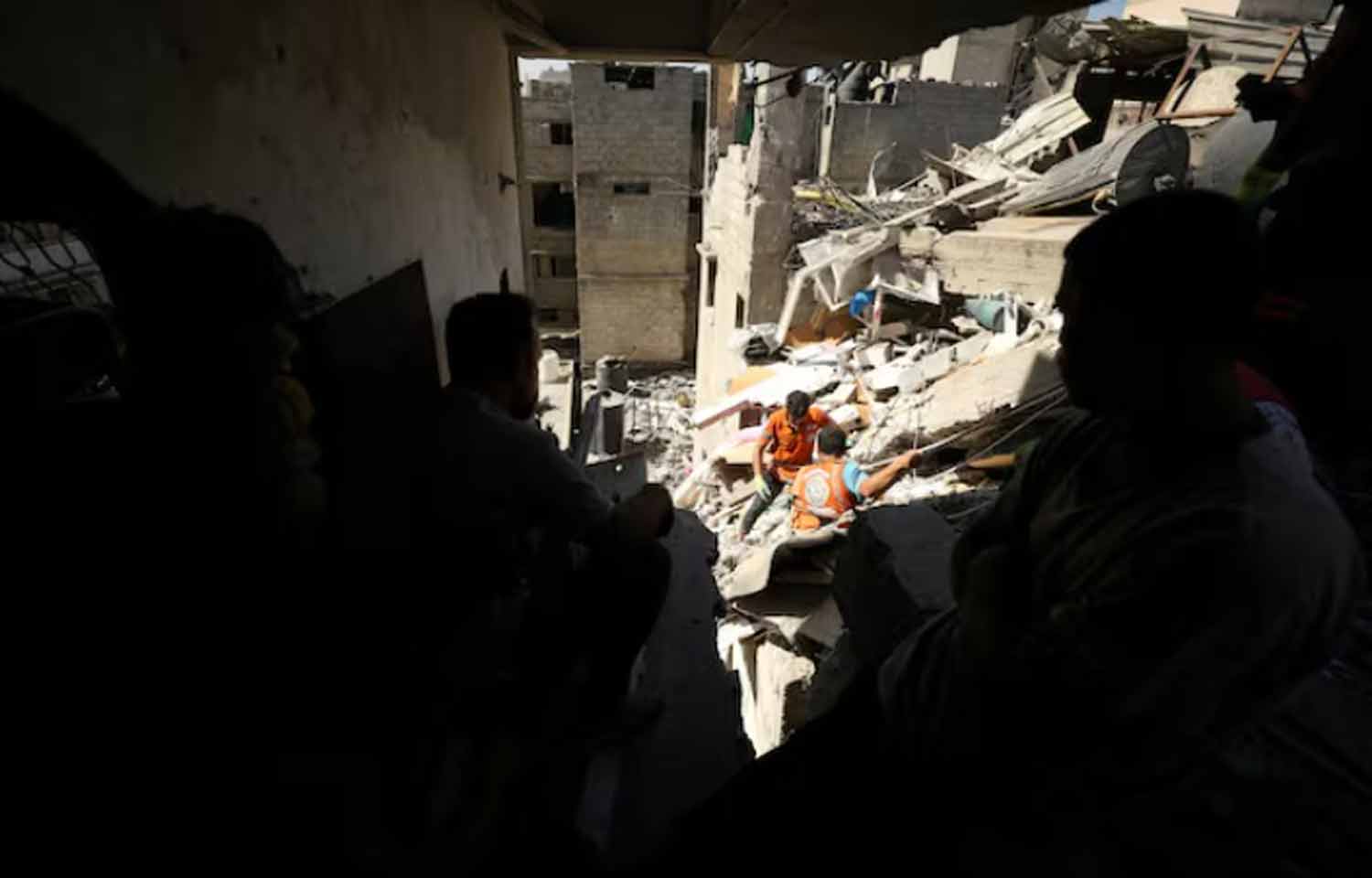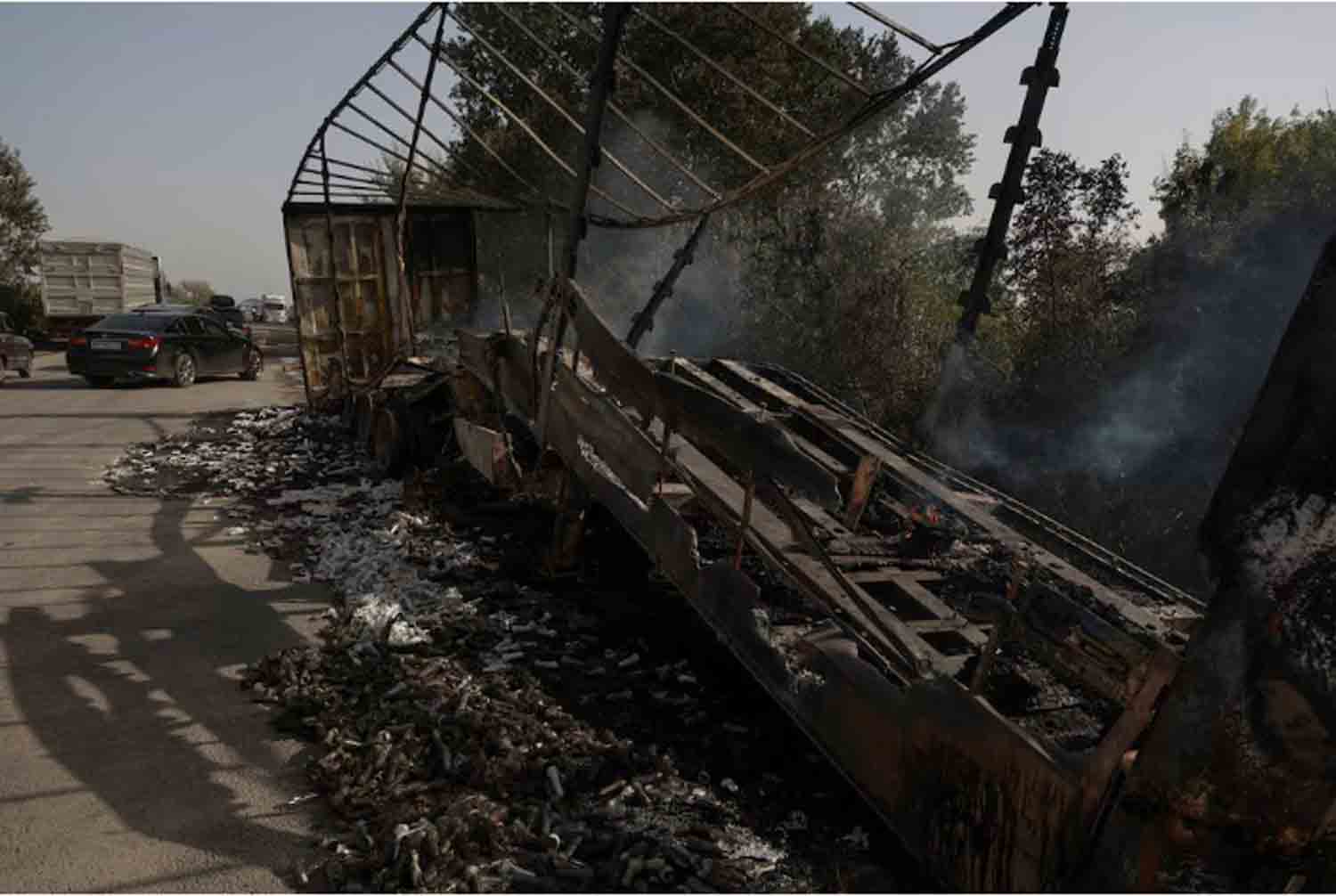In the remnants of his two-story house, 11-year-old Mohammed collects pieces of the collapsed roof into a damaged bucket and crushes them into gravel, which his father will use to create gravestones for those lost in the Gaza conflict. “We gather the debris not to construct homes, but for tombstones and graves—transitioning from one tragedy to another,” explains his father, Jihad Shamali, 42, a former construction worker, as he cuts through metal salvaged from their residence in Khan Younis, which was destroyed during an Israeli operation in April.
The task is laborious and often somber. In March, the family constructed a grave for one of Shamali’s sons, Ismail, who was killed while running errands. However, this effort represents a small part of the initiatives beginning to emerge to address the debris left by Israel’s military actions aimed at dismantling the Palestinian militant group Hamas.
The United Nations has reported that there are more than 42 million tonnes of debris, which includes both partially standing structures and completely collapsed buildings. This amount is 14 times greater than the rubble accumulated in Gaza from 2008 until the onset of the recent conflict a year ago, and it exceeds the debris left by the 2016-17 Battle of Mosul in Iraq by more than five times, according to the U.N. If stacked, this debris would fill the Great Pyramid of Giza, Egypt’s largest pyramid, eleven times over, and the volume continues to increase daily.
In response, the U.N. is working to assist Gazan authorities in managing the debris, as indicated by three U.N. officials. A U.N.-led Debris Management Working Group is set to initiate a pilot project in collaboration with Palestinian authorities in Khan Younis and Deir El-Balah to begin clearing debris from the roads this month. “The challenges are immense,” stated Alessandro Mrakic, head of the Gaza Office for the United Nations Development Programme (UNDP), which co-chairs the working group. “This will be a significant undertaking, but it is crucial that we commence immediately.”
Israel’s military has stated that Hamas fighters conceal themselves among civilian populations and that they will target them wherever they appear, while making efforts to minimize civilian casualties. In response to inquiries about debris management, Israel’s military unit COGAT indicated its intention to enhance waste disposal practices and collaborate with the U.N. to broaden these initiatives. Mrakic noted that coordination with Israel has been effective, although detailed discussions regarding future plans are still pending.
TENTS AMID THE RUINS
The offensive by Israel commenced following the incursion of Hamas militants into Israel on October 7 of the previous year, resulting in the deaths of approximately 1,200 Israelis and the abduction of over 250 individuals. According to Palestinian health authorities, nearly 42,000 Palestinians have lost their lives during the year-long conflict. On the ground, debris is stacked high, obstructing pedestrians and donkey carts on what were once bustling streets. “Who is going to come here and clear the rubble for us? No one. Therefore, we did that ourselves,” remarked taxi driver Yusri Abu Shabab, who managed to clear enough debris from his home in Khan Younis to set up a tent.
Approximately two-thirds of the structures in Gaza prior to the conflict—over 163,000 buildings—have sustained damage or been completely destroyed, as indicated by U.N. satellite imagery. About one-third of these were high-rise buildings. Following a seven-week conflict in Gaza in 2014, the UNDP and its collaborators managed to remove 3 million tonnes of debris, which represents only 7% of the current total. Mrakic referenced an unpublished preliminary estimate suggesting that clearing 10 million tonnes would require around $280 million, indicating a potential cost of approximately $1.2 billion if hostilities were to cease at this moment. A U.N. estimate from April projected that it would take 14 years to remove the rubble.
HIDDEN REMAINS
The debris also conceals unrecovered bodies, with estimates from the Palestinian health ministry suggesting there could be as many as 10,000, along with unexploded ordnance, according to Mrakic.
The International Committee of the Red Cross has described the threat as “widespread,” while U.N. officials warn that some debris presents a significant risk of injury. Nizar Zurub, residing in Khan Younis with his son, occupies a home where only the roof remains, precariously tilted.
According to the United Nations Environment Programme, approximately 2.3 million tonnes of debris may be contaminated, based on an evaluation of Gaza’s eight refugee camps, several of which have sustained damage.
Inhalation of asbestos fibers is linked to laryngeal, ovarian, and lung cancers. The World Health Organization has reported nearly one million cases of acute respiratory infections in Gaza over the past year, although it has not specified how many are associated with dust exposure. WHO spokesperson Bisma Akbar emphasized that dust is a “major concern,” as it can contaminate both water and soil, potentially leading to respiratory diseases.
Medical professionals are apprehensive about an increase in cancer cases and birth defects due to the leaching of metals in the coming years. Additionally, a UNEP spokesperson highlighted concerns regarding snake and scorpion bites, as well as skin infections caused by sandflies.
SHORTAGES OF LAND AND EQUIPMENT
Previously, rubble from Gaza has been utilized to construct seaports. The U.N. now aims to recycle some of this material for road construction and to reinforce the coastline. The UNDP notes that Gaza, which had a pre-war population of 2.3 million within a 45 km (28 miles) long and 10 km wide area, faces significant challenges in finding adequate space for debris disposal.
Landfills are currently situated within an Israeli military zone. According to Israel’s COGAT, these sites are located in a restricted area, although access will be permitted. Mrakic noted that increased recycling could lead to additional funding for equipment like industrial crushers, which would need to be transported through crossing points overseen by Israel.
Government representatives have reported shortages of fuel and machinery due to Israeli restrictions that hinder cleanup operations. A spokesperson for UNEP indicated that lengthy approval processes represent a significant obstacle. Israel has not directly addressed claims regarding its limitations on machinery.
The UNEP has stated that it requires the consent of property owners to clear debris; however, the extensive destruction has complicated property lines, and some records have been lost amid the conflict. Following a meeting hosted by the Palestinian government in the West Bank on August 12, several donors have shown interest in providing assistance, as mentioned by Mrakic, though he did not disclose their identities. A U.N. official, who requested to remain anonymous to protect ongoing initiatives, expressed concern about the willingness to invest in Gaza’s reconstruction without a political resolution in place.
Discover more from Defence Talks | Defense News Hub, Military Updates, Security Insights
Subscribe to get the latest posts sent to your email.





